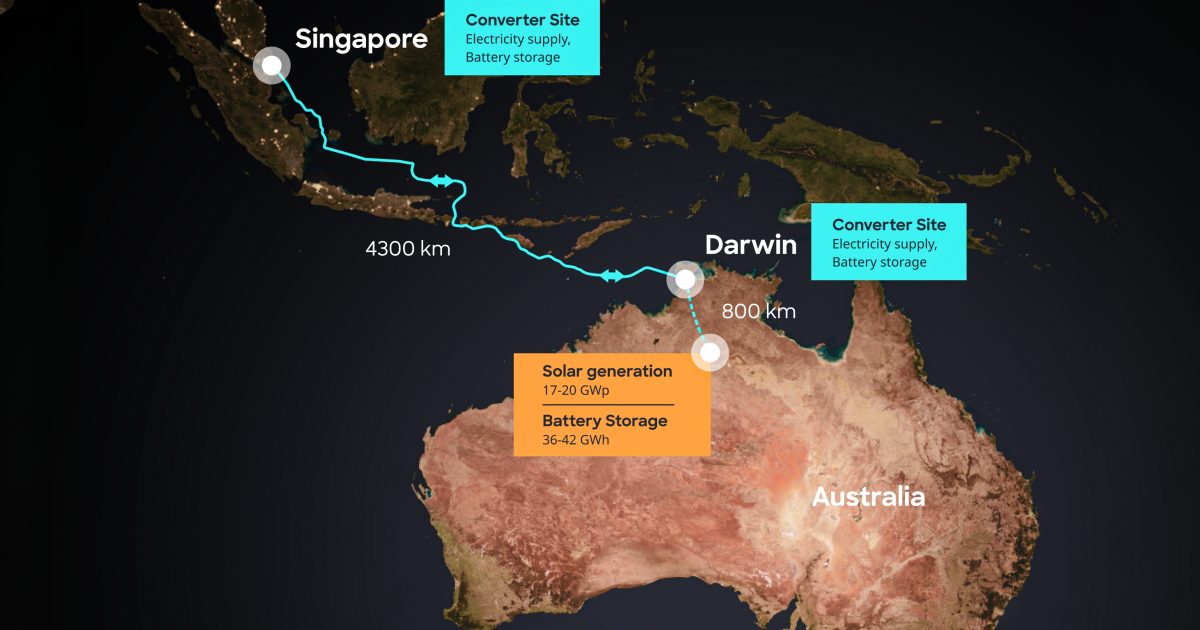“The world’s largest renewable energy and transmission project has received key approval from government officials,” reports New Atlas.
Solar power from Australia will be carried 2,672 miles (4,300 kilometers) to Singapore over undersea cables in what’s being called “the Australia-Asia Power Link project.” Reuters reports that SunCable “aims to produce 6 gigawatts of electricity at a vast solar farm in Northern Australia and ship about a third of that to Singapore via undersea cable.”
More from New Atlas:
[The project] will start by constructing a mammoth solar farm in Australia’s Northern Territory to transmit around-the-clock clean power to [the Australian city] Darwin, and also export “reliable, cost-competitive renewable energy” to Singapore… with a clean energy generation capacity of up to 10 gigawatts, plus utility scale onsite storage. [The recently-obtained environmental approval] also green lights an 800-km (~500-mile) overhead transmission line between the solar precinct and Murrumujuk near Darwin…
If all of the dominoes line up perfectly, supply of the first clean electricity is estimated to start in the early 2030s. An overview graphic on the project page shows that the eventual end game for the Powell Creek development appears to be the generation of up to 20 GW of peak solar power and have some 36-42 GWh of battery storage on site.
Abstract credit: https://m.slashdot.org/story/434727



Is there already extensive precedence of undersea, long distance power distribution? I could imagine the losses would be outrageous at that distance.
HVDC cables don’t have the same losses as the more common AC cables.
High voltage DC lines lose about 3% per 1000km, so this project with 4300km of lines could theoretically be set up to lose 12% in losses. There’s also some experimentation with ultra high voltages that would be more efficient, but probably more complex to engineer.
How about reliability?
Example, SwePol, from the Wikipedia:
Maybe take a look at the North Sea Link with 730 km length, 1.4 GW power rating and estimated costs of €2 billion, becoming operational in 2021.
The NSL has thus roughly
of the Australia-Asia Power Link.
Seems expensive to build above tried specifications.
12x GW*km at 9x the price is better than 1:1 performance/cost scaling. Obviously labor price and other factors make it not apples to apples, but that doesn’t seem like an awful scaling price premium